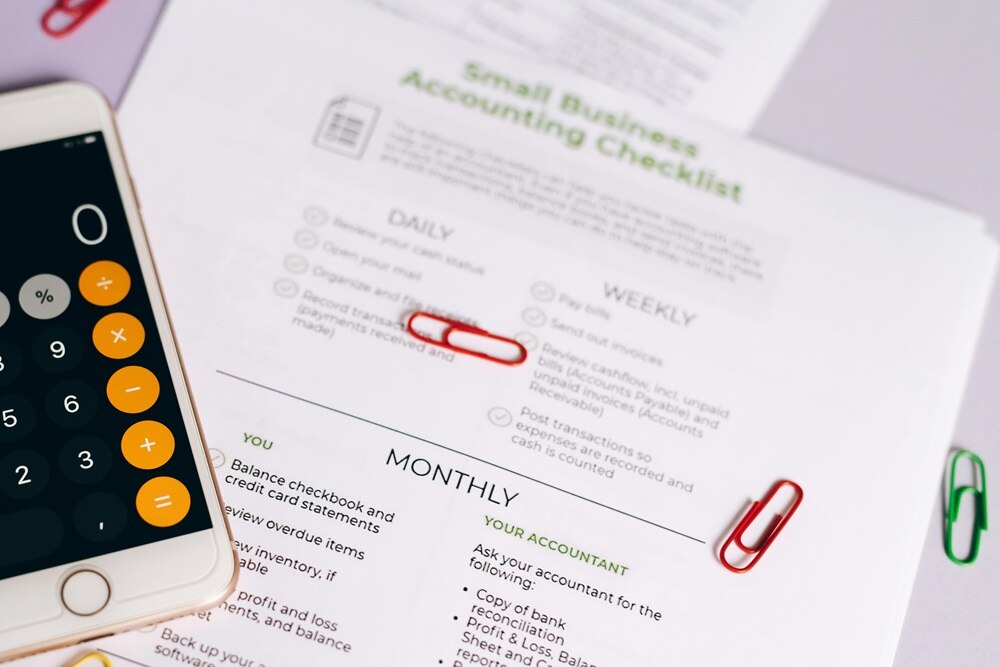
hat do you need to effectively manage and track your store finances? How can it benefit your business? At Qalara, we are here to tell you that budgeting and proper retail accounting are key elements of a successful retail operation. By keeping a close eye on your store finances, you gain valuable real-time insights, enabling you to make more informed decisions that drive growth. To that effect, implementing accounting best practices helps ensure your financial records are always up to date.
It is important to note that retail management is more than just managing stock. It encompasses various critical components such as inventory management, marketing, sales, employee management, customer service, and more. Among these pillars, the main one is retail finance management. Effective financial management is the backbone of a successful retail operation, ensuring that every part of the business—from budgeting and cash flow to inventory costs and profits—runs smoothly. Without a well-structured approach to managing store finances, even the most well-organized retail businesses can face challenges.
But what exactly is retail accounting, and how does it differ from standard accounting methods? In this blog, Qalara delves into the essentials of retail accounting and offers practical tips for managing store finances effectively—covering vital topics like inventory management, cash flow, bookkeeping, budgeting, tax preparation, profit margins, and cost accounting. Read on to discover how these strategies are crucial for retail businesses of any size.
Understanding retail & cost accounting
For mastering retail finance management, 2 types of accounting methods are prevalent: retail accounting and cost accounting. Starkly different from each other, both these methods are vital means of understanding your inventory. Let us differentiate these accounting techniques.
Defining retail and cost accounting
The retail accounting method is an important means for store owners to estimate the value of their inventory. This method of inventory valuation focuses on the selling price of inventory. Convenient and easy to calculate, retail accounting is easier to navigate for calculating profit. It often utilizes a markup-based approach, calculating profits based on the difference between retail price and the cost of inventory.
As opposed to this is the cost accounting method. This method of accounting focuses on the actual cost price of inventory. Thus, the acquisition price of inventory takes precedence over the selling price. This method gives a more accurate result.
Refer to the table below for more differentiating factors between the two:
Retail accounting | Cost accounting |
Relies on the selling price of inventory to calculate values | Focuses on the actual cost involved in acquiring the inventory |
Easier to calculate. Quicker and simpler to apply | Provides more detailed and precise tracking |
Ideal for small to medium-sized retailers | Ideal for businesses with intricate inventory needs |
May be less accurate, especially when markups fluctuate significantly | More accurate overall as it accounts for the true cost of each item |
Easier to determine profit margins based on selling prices | Enables more precise profit margin analysis by using the actual item costs |
Ideal for retailers maintaining consistent markups across products | Ideal for businesses handling a diverse or high-value inventory |
Let us look at an example to understand retail accounting better.
Imagine you run a shoe store and mark up your prices by 40%, meaning you charge customers 40% more than what you paid to stock each pair of shoes. At the start of the quarter, your inventory is worth $50,000 (at cost). During the quarter, you buy $5,000 more shoes, and your total sales are $20,000. To find the ending value of your inventory, you subtract the cost of the shoes you sold.
- Beginning inventory: $50,000
- New inventory: $5,000
- Total inventory: $55,000
- Cost of sold shoes: $20,000 * 40% = $8,000
- Ending inventory: $55,000 – $8,000 = $47,000
By using this retail accounting method, you quickly have a good estimate of your store’s finances and the ending value of your inventory.
Importance of tracking sales, inventory, and operational costs
In retail, accurate tracking of sales, inventory, and operational costs is essential to managing store finances effectively. Monitoring sales provides insight into revenue, while tracking inventory ensures optimal stock levels, reducing the risks of overstocking or running out of products. Keeping an eye on operational costs like staffing and utilities helps maintain profitability.
In addition, retailers face unique challenges such as shrinkage (loss of inventory due to theft or errors) and inventory turnover (how often stock is sold and replaced). Managing these factors is key to maintaining profitability and ensuring that resources are used efficiently, making retail accounting crucial to the overall health of a store’s finances.
Also read: 5 hacks to sell excess inventory
Key elements of store finances
Inventory management
Inventory tracking is crucial for maintaining optimal stock levels, preventing overstock or stockouts, and ensuring smooth operations. Thorough inventory management helps retailers minimize losses, control costs, and enhance profitability. Accurate tracking also supports better decision-making, improves cash flow, and enables timely replenishment to meet customer demands.
Effective inventory management is closely linked to financial reporting and directly impacts profit margins. By accurately tracking inventory levels, retailers can determine the true cost of goods sold (COGS), which plays a critical role in calculating profit margins. Proper management of stock prevents losses from overstocking, stockouts, and shrinkage, ensuring a healthy cash flow. Additionally, streamlined inventory processes allow for more accurate financial reporting, providing insights into operating expenses and cost efficiencies. This transparency helps retailers make informed decisions on pricing, procurement, and also sales strategies, ultimately improving profitability and business growth.
Key inventory costing methods
When managing store finances, retailers use various inventory costing methods to determine the value of their stock and calculate profits. Here are 5 key methods used in retail accounting:
• FIFO (First In, First Out)
This method assumes that the first items purchased are the first sold. It is widely used because it reflects the natural flow of inventory. In times of inflation, FIFO results in higher profits since older, lower-cost items are recorded as sold first.
• LIFO (Last In, First Out)
LIFO assumes the most recent inventory is sold first. It is ideal for businesses with fluctuating costs. While it reduces taxable income during inflationary periods by assigning higher-cost inventory to sales, it is less commonly used outside the U.S. due to strict regulations.
• Weighted averages
This method calculates an average cost per unit by dividing the total cost of goods by the number of units. It smooths out price fluctuations and is commonly used in industries with identical or similar items.
• Specific identification
Used for high-value or unique items, this method tracks the actual cost of each item sold, providing precise cost and profit figures.
• Retail inventory method
Based on a consistent markup, it estimates inventory value by comparing retail price to cost, offering a simplified way to estimate stock value.
These methods help retailers accurately track inventory costs and manage profitability.
Cash flow management
Cash flow management refers to the balance between cash inflow (money coming into your business, such as sales revenue) and cash outflow (money going out, including expenses like rent, wages, and inventory costs). Maintaining healthy cash flow is essential for ensuring your business operates smoothly without financial strain.
To keep your cash flow in check, consider delaying payables where possible—negotiate longer payment terms with suppliers to keep cash in hand longer. On the flip side, aim for early receivables by offering discounts for customers who pay invoices early. Additionally, closely monitor your inventory management to avoid overstocking, which can tie up capital, and streamline operational costs to prevent unnecessary expenditures.
Also read: How to measure and optimize your retail KPIs
Bookkeeping best practices for retailers

Effective bookkeeping is the foundation of a successful retail business, ensuring that all financial transactions are accurately tracked and reported. One of the most important habits for retailers is daily tracking and reconciling financial transactions. This practice not only provides a real-time snapshot of your store finances but also helps avoid errors and discrepancies that may arise from delayed data entry. Keeping your books up to date will enable more accurate decision-making, particularly when it comes to managing cash flow, profit margins, and inventory levels.
Also read: 12 effective tools for retail businesses
Retailers often face the decision of choosing between manual and automated bookkeeping. Manual bookkeeping can work for smaller operations but is prone to errors, time-consuming, and often inefficient as your business grows. On the other hand, automated bookkeeping software such as QuickBooks or Xero streamlines the process, reduces the risk of human error, and allows for better tracking of expenses, sales, and inventory. Automation also integrates directly with retail accounting systems, saving time and improving accuracy.
Here are a few bookkeeping tips for stores to ensure smooth financial management:
• Separate business and personal finances
Keep your personal and business accounts separate to avoid confusion, simplify tax filing, and maintain accurate financial records.
• Track all expenses
Record every business expense, no matter how small. This helps with budgeting and ensures no expenses are overlooked during tax time.
• Regularly reconcile bank statements
Reconcile your accounts with bank statements to spot any inconsistencies and prevent potential fraud. It is best to do this weekly or monthly to catch issues early.
By implementing these best practices, retailers can maintain healthy financial records, ensuring accurate financial reporting and long-term success.
Also read: The art of effectively using AI in retail
Leveraging retail accounting softwares
Retail accounting softwares offer comprehensive solutions for managing store finances. Let us take a quick look at some tools you can use to make your store’s accounting practices easier.
• QuickBooks
This is widely known for its user-friendly interface and powerful features, such as payroll management, expense tracking, and tax filing.
• Xero
This software provides excellent integration capabilities with various third-party apps, making it ideal for retailers with a global presence.
• Zoho Books
A budget-friendly option for small and medium-sized businesses, offering essential accounting features, including invoicing, expense tracking, and financial reporting.
• Melio
Melio is a payment-focused platform that simplifies accounts payable. Retailers can use it to manage vendor payments, schedule transactions, and keep track of cash flow, ensuring smooth operations without missing deadlines.
• Wave
Wave is a free accounting tool perfect for small retailers. It offers invoicing, expense tracking, and inventory management, making it a cost-effective option to handle basic financial needs, with added premium services for payroll and payments.
• Sage 50cloud
Sage 50cloud combines powerful desktop accounting software with the convenience of cloud access. Retailers can manage cash flow, inventory, and financial reporting while syncing data to the cloud for flexibility and real-time tracking.
• AccountEdge Pro
AccountEdge Pro is a comprehensive accounting solution that allows retailers to manage payroll, inventory, and financial reports. It is known for its robust features and scalability, making it suitable for both small and large retail businesses.
• OneUp
OneUp provides automated accounting, inventory management, and invoicing features. It helps retailers track stock levels, manage cash flow, and automate bookkeeping tasks, all from a single integrated platform.
• Holded
Holded is a comprehensive business management software offering accounting, inventory, and CRM functionalities. It helps retailers optimize cash flow tracking and streamline financial reporting with real-time data integration across departments.
• Cin7
Cin7 is an inventory management solution that also integrates with accounting software, helping retailers manage stock levels, handle order processing, and maintain accurate financial records for better profitability and cash flow oversight.
These tools simplify critical financial tasks such as inventory management, cash flow tracking, and financial reporting. Retailers can automate stock tracking, monitor cash inflows and outflows, and generate detailed reports on business performance.
Accounting automation reduces manual entry errors, enhances accuracy, and saves time by automating routine tasks like reconciliation, invoicing, and tax preparation. This leads to better financial control and improved decision-making for retailers.
Conclusion
Effective retail accounting and store finance management are essential for sustaining a successful retail business. Tracking key metrics like cash flow, inventory, and profit margins ensures financial stability and helps identify growth opportunities. Leveraging modern tools such as accounting software and automation not only simplifies these processes but also minimizes errors, allowing you to focus on scaling your business.
We encourage retailers to adopt these best practices and share their experiences with us. By staying organized, utilizing the right tools, and keeping a close eye on your finances, you will be well-equipped to navigate the complexities of retail and ensure long-term success, improved financial health and sustainable growth.
~ Written by Gauri S





Leave a Reply